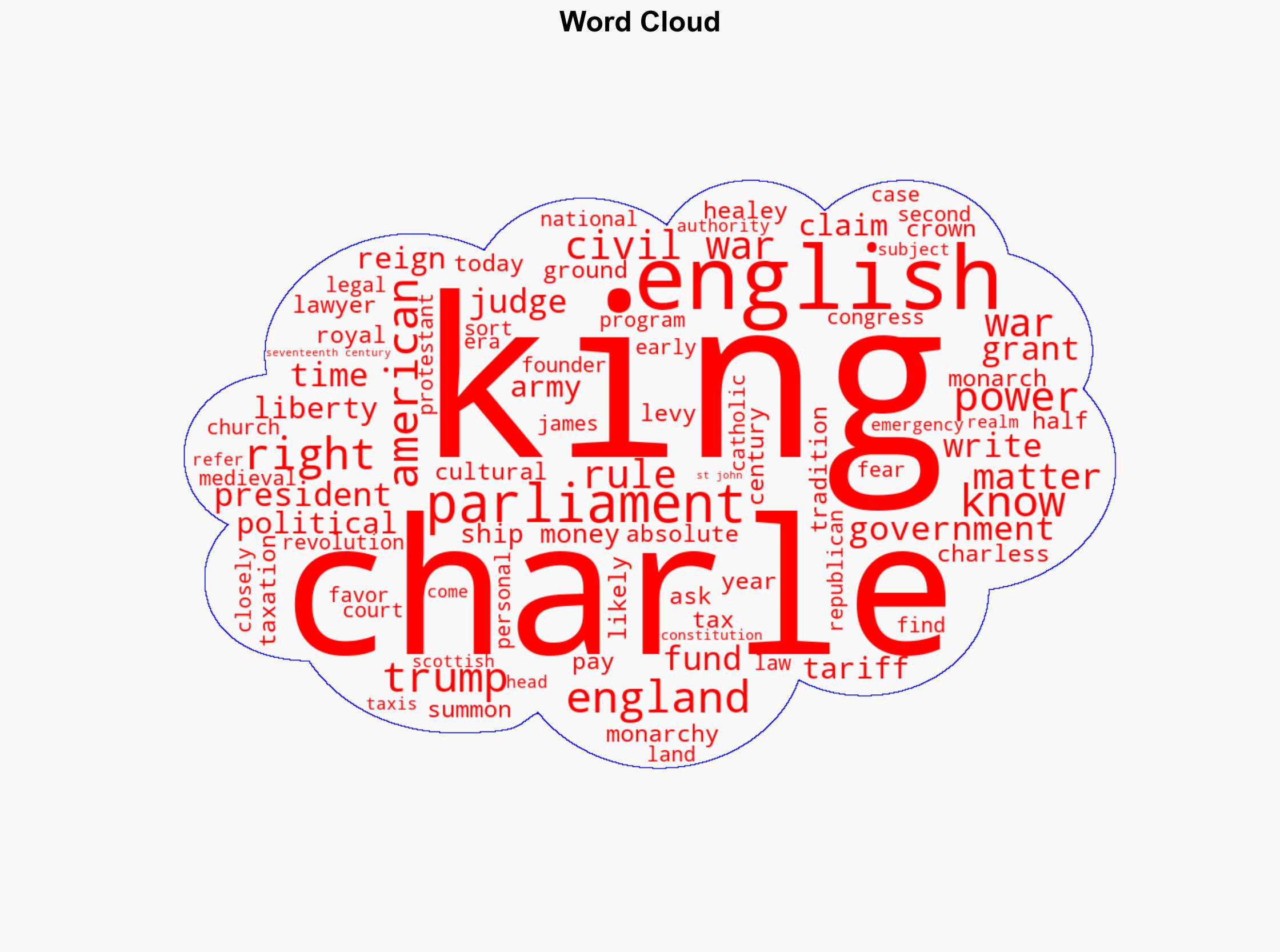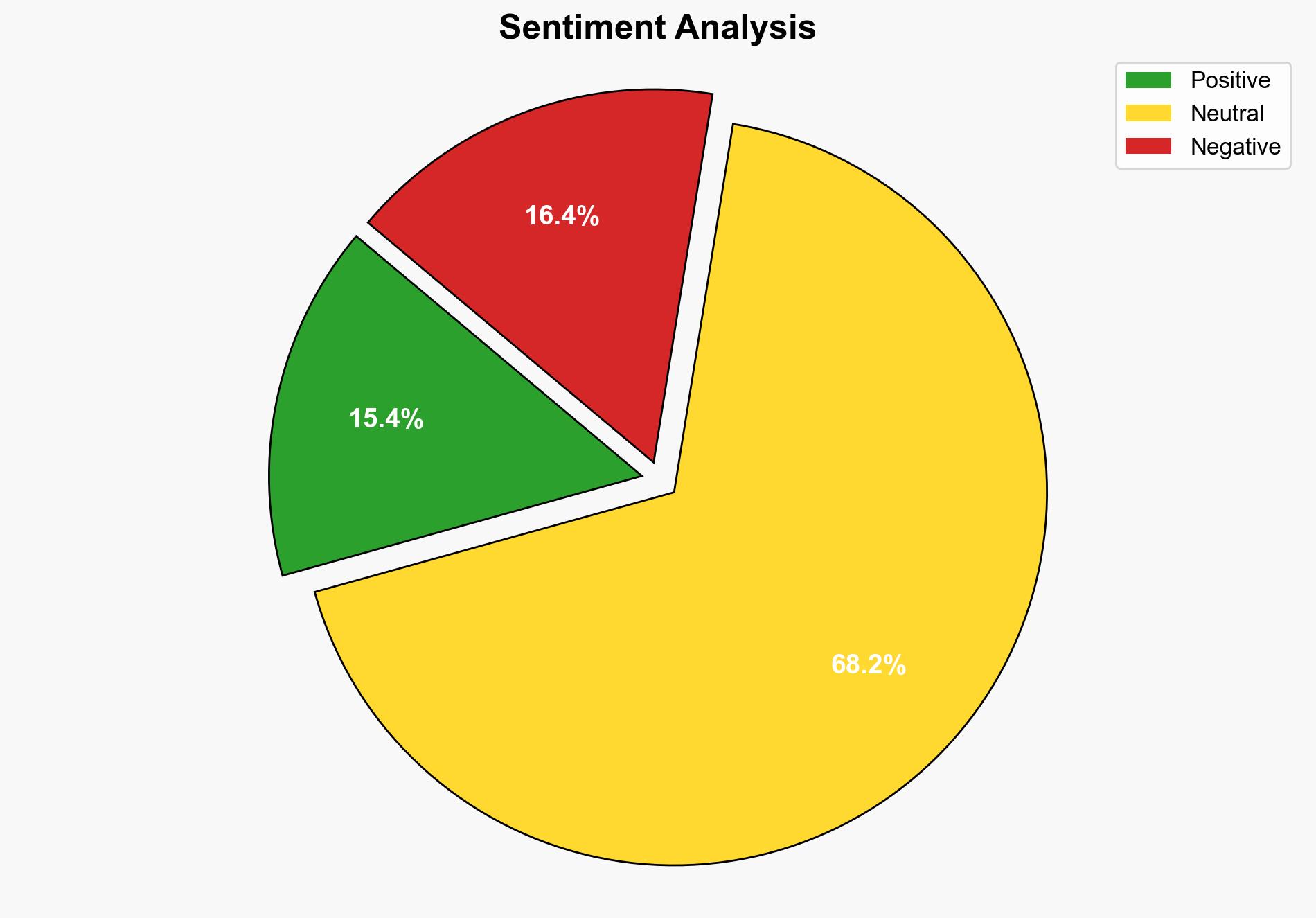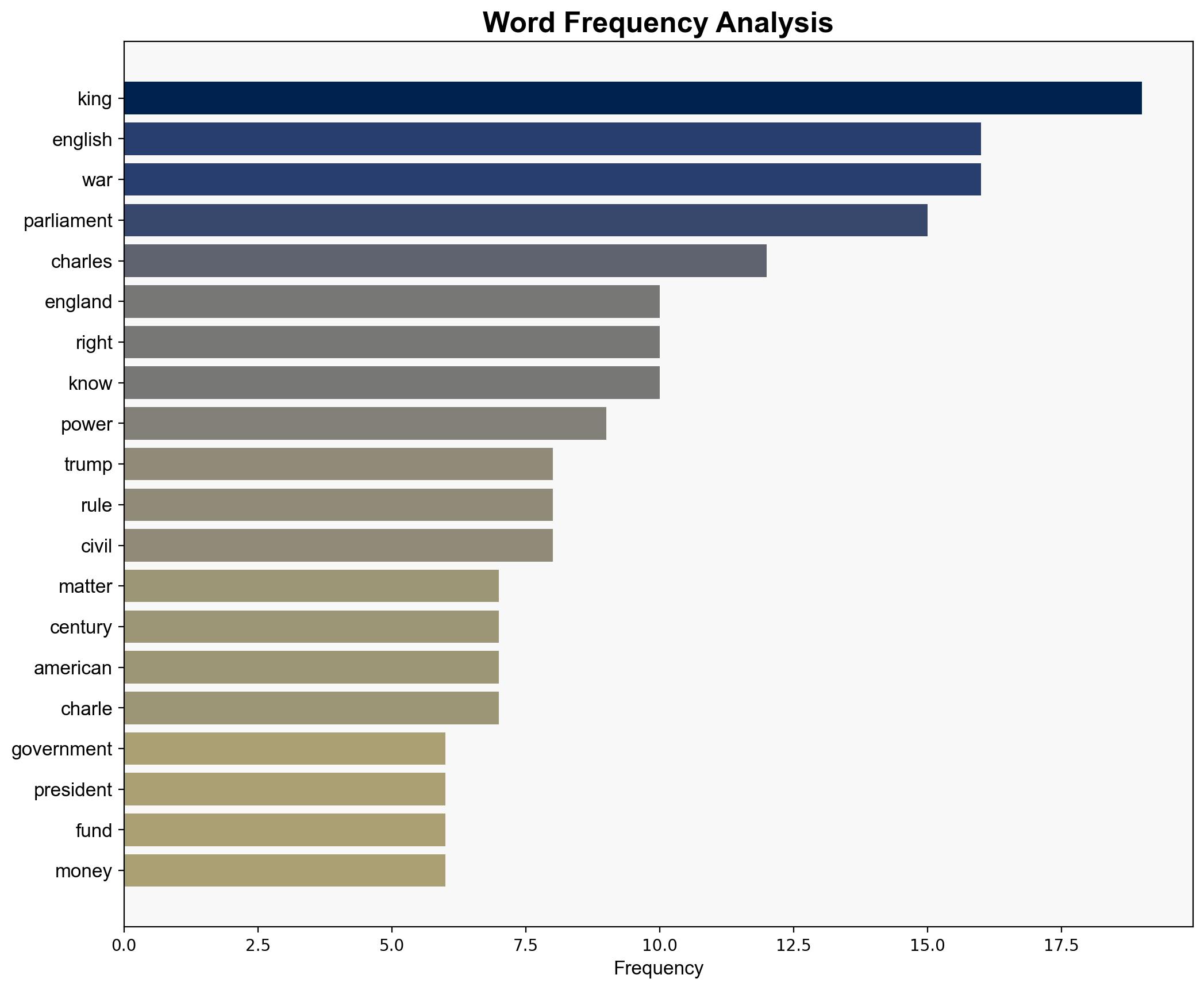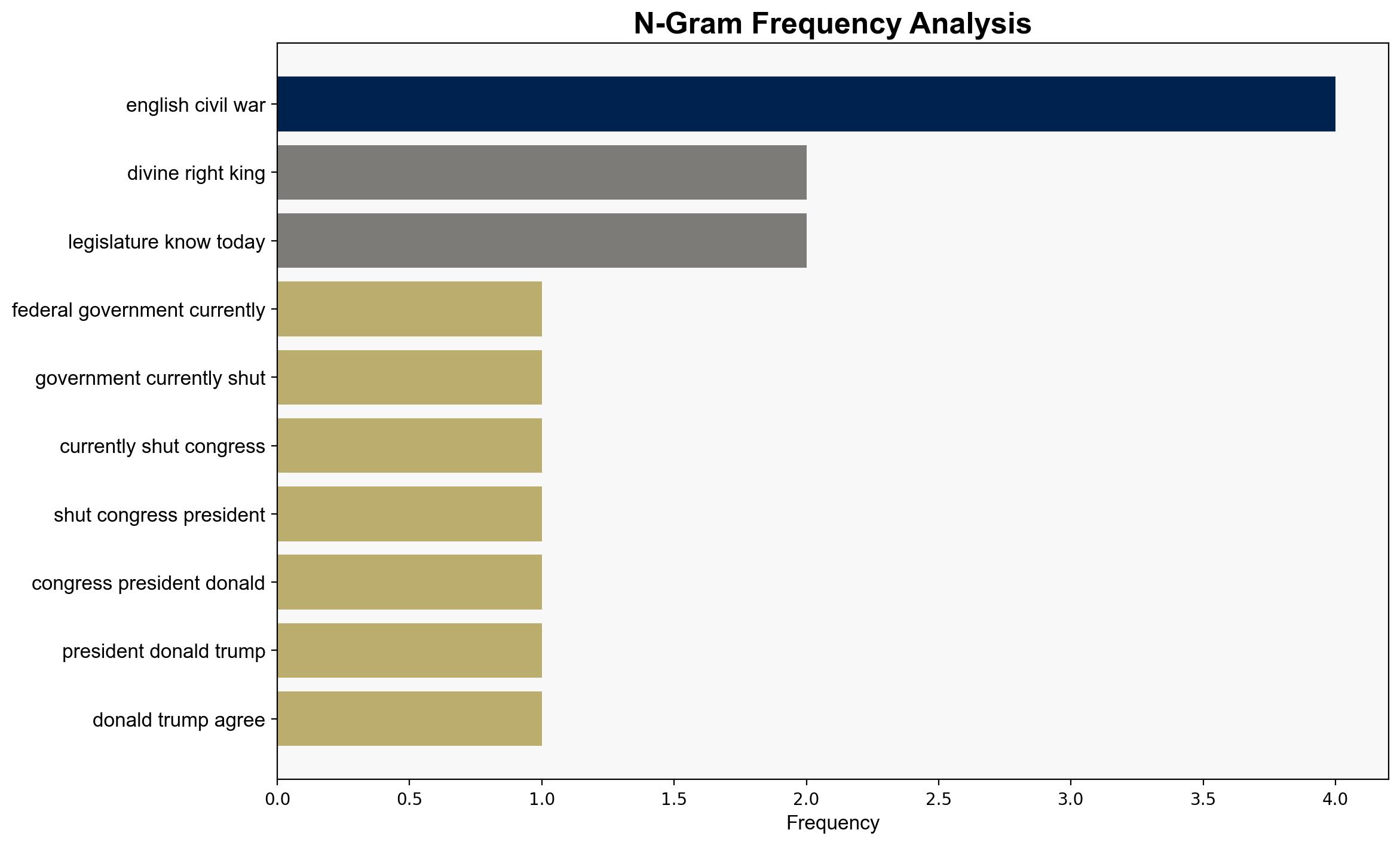Trump Is Following in the Footsteps of a Failed English King – The New Republic
Published on: 2025-10-10
Intelligence Report: Trump Is Following in the Footsteps of a Failed English King – The New Republic
1. BLUF (Bottom Line Up Front)
The analysis suggests that the actions of Donald Trump, particularly concerning the use of tariffs and the bypassing of congressional authority, may reflect a strategic attempt to consolidate executive power, akin to historical precedents of absolute rule. The hypothesis that Trump’s actions are a deliberate strategy to challenge and potentially reshape the balance of power is better supported. Confidence level: Moderate. Recommended action: Monitor legislative and judicial responses to executive actions and assess potential impacts on democratic institutions.
2. Competing Hypotheses
1. **Hypothesis A**: Trump’s actions are a strategic maneuver to consolidate executive power, similar to historical precedents of absolute rule, potentially reshaping the balance of power in the U.S. government.
2. **Hypothesis B**: Trump’s actions are primarily driven by short-term political and economic goals, with no overarching strategy to alter the balance of power, and are instead reactive measures to immediate challenges.
Using the Analysis of Competing Hypotheses (ACH) 2.0, Hypothesis A is better supported by the pattern of actions that align with historical examples of power consolidation, such as the imposition of tariffs without congressional approval and the invocation of executive privilege.
3. Key Assumptions and Red Flags
– **Assumptions**: Hypothesis A assumes a deliberate strategy by Trump to emulate historical examples of power consolidation. Hypothesis B assumes a lack of long-term strategic intent.
– **Red Flags**: The comparison to historical figures may oversimplify complex modern political dynamics. Potential cognitive bias includes confirmation bias towards viewing Trump’s actions as historically analogous.
– **Inconsistent Data**: Lack of direct evidence linking Trump’s actions to a coherent long-term strategy.
4. Implications and Strategic Risks
– **Patterns**: Increasing executive actions without congressional approval could set a precedent for future administrations, potentially eroding checks and balances.
– **Cascading Threats**: Potential for increased political polarization and institutional distrust.
– **Escalation Scenarios**: Legal challenges to executive actions could lead to significant Supreme Court rulings, impacting the separation of powers.
5. Recommendations and Outlook
- Monitor judicial outcomes of legal challenges to executive actions for shifts in the balance of power.
- Engage in bipartisan dialogue to reinforce legislative oversight and maintain institutional integrity.
- Scenario-based projections:
- Best: Legal frameworks are reinforced, maintaining balance of power.
- Worst: Precedents weaken legislative authority, leading to executive overreach.
- Most Likely: Continued legal and political contention with incremental shifts in power dynamics.
6. Key Individuals and Entities
– Donald Trump
– Supreme Court
– U.S. Congress
7. Thematic Tags
national security threats, executive power, legislative oversight, judicial review




